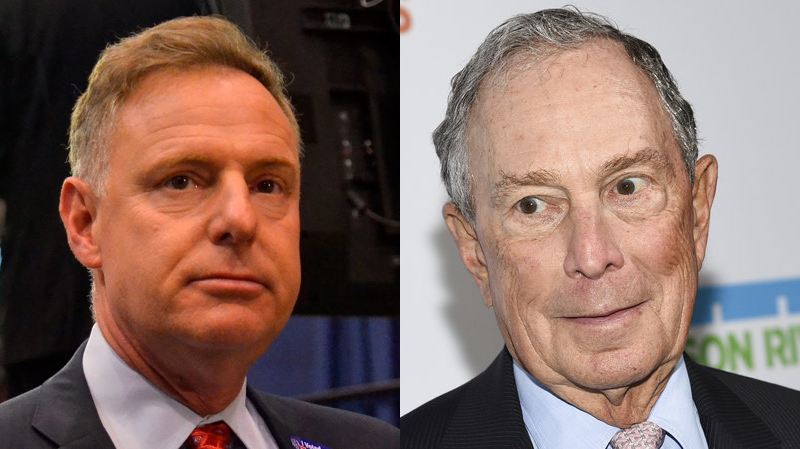Leaders to Leaders Summit on Climate: Day 2
 President Biden invited 40 world leaders to the Leaders Summit on Climate he will host on April 22 and 23. The virtual Leaders Summit will be live streamed for public viewing.
President Biden invited 40 world leaders to the Leaders Summit on Climate he will host on April 22 and 23. The virtual Leaders Summit will be live streamed for public viewing.
8:00 a.m.–Session 4
Unleashing Climate Innovation
This session will highlight the critical role of technological innovation in achieving a net-zero, climate-resilient economy; the importance of accelerating public and private investment in climate innovation; and the enormous economic opportunities in building the industries of the future.
U.S. Participants:- Secretary of Energy Jennifer M. Granholm
- Secretary of Commerce Gina M. Raimondo
- Special Presidential Envoy for Climate John Kerry
- Prime Minister Mette Frederiksen, Denmark
- Prime Minister Benjamin Netanyahu, Israel
- President Uhuru Kenyatta, Kenya
- Prime Minister Erna Solberg, Norway
- Prime Minister Lee Hsien Loong, Singapore
- Prime Minister Sheikh Mohammed Bin Rashid Al Maktoum, United Arab Emirates
- Fatih Birol, Executive Director, International Energy Agency
- Anna Borg, President and CEO, Vattenfall
- Shirley Ann Jackson, President, Rensselaer Polytechnic Institute
- Danielle Merfeld, Vice President and Chief Technology Officer, GE Renewable Energy
- Audrey Zibelman, Vice President, X
9:15 a.m.–Session 5
The Economic Opportunities of Climate Action
This session will highlight the broad economic benefits of climate action, with a strong focus on job creation. It will explore the economic benefits of green recovery and long-term decarbonization and the importance of ensuring that all communities and workers benefit from the clean-energy transition.
U.S. Participants:- Secretary of Transportation Pete Buttigieg
- United States Trade Representative Katherine C. Tai
- National Climate Advisor Gina McCarthy
- President Muhammadu Buhari, Nigeria
- President Andrzej Duda, Poland
- Prime Minister Pedro Sánchez, Spain
- President Nguyen Xuan Phuc, Vietnam
- Jack Allen, CEO, Proterra
- Roxanne Brown, International Vice President at Large, United Steelworkers
- Sharan Burrow, General Secretary, International Trade Union
- Brett Isaac, CEO, Navajo Power
- Erica Mackie, CEO, Grid Alternatives
- Nthabiseng Mosia, Co-Founder and CCO, Easy Solar
- George Oliver, Chairman and CEO, Johnson Controls International; Chair, Business Roundtable Energy and Environment Committee
- Lonnie R. Stephenson, President, International Brotherhood of Electrical Workers
- Michael Bloomberg, U.N. Special Envoy on Climate Ambition and Solutions
- Bill Gates, Founder, Breakthrough Energy
- Brenda Mallory, Chair, White House Council on Environmental Quality
- Peggy Shepard, Executive Director, WE ACT for Environmental Justice; Co-Chair, White House Environmental Justice Advisory Council
Mike Bloomberg's Climate Chair Opposes The Green New Deal
 Rep. Scott Peters (D-Calif.) is Mike Bloomberg’s campaign climate chair.
Rep. Scott Peters (D-Calif.) is Mike Bloomberg’s campaign climate chair.“I’m totally on board with getting to net-zero by mid-century. But the Green New Deal is not bold in that it doesn’t bring anyone else in. It is the easiest thing in the world to go talk to a bunch of people you agree with and do a fiery speech.”Peters has reiterated his complaint that the Green New Deal lacks Republican support. In September, he told the San Diego Herald Tribune:
“I’ve explained it so many times. There’s not a Republican on it. It doesn’t even have a majority of Democrats. It got voted down in the Senate. So why people keep asking me about the Green New Deal is beyond me.”
He went on to attack the Green New Deal’s economic provisions, which are some of its most popular among Americans. “That just makes saving the planet a lot harder,” he said. “Now you’re talking about remaking the economy. I think we have a hard enough problem now.”
Peters is facing primary opponent Nancy Casady because of his opposition to the Green New Deal.
Peters’ former chief of staff, MaryAnne Pintar, is working on the Bloomberg campaign in California.
Politico’s Christopher Cadelago reports:{eters is a vice chair of the pro-business group New Democrats, whose members huddled with Bloomberg on his recent visit to Capitol Hill. Peters, whose longtime chief of staff, MaryAnne Pintar, is a regional political director for Bloomberg in California, has warned Democrats against nominating a progressive like Sens. Bernie Sanders or Elizabeth Warren, saying their policies would make them more vulnerable to Trump in November.“I do believe we need an alternative to Sen. Sanders and Sen. Warren. I don’t think that those are candidates who will win a general election. And I also disagree with them more on policy.”
Like Peters, Mike Bloomberg himself opposes the Green New Deal, saying the ambitious agenda “stands no chance” of passage in the Senate. Several of the Republicans in the U.S. Senate who oppose the Green New Deal have been supported for election by Bloomberg.
(Politico is paid by the fossil-fuel industry to promote their interests.)
New York Sandy 'Climate Resilience' Plan Won't Address Climate Pollution
 The nearly $300 million climate-resiliency initiative established by New York City Mayor Michael Bloomberg using Sandy relief funds will not address climate pollution, according to a city official.
The nearly $300 million climate-resiliency initiative established by New York City Mayor Michael Bloomberg using Sandy relief funds will not address climate pollution, according to a city official.
The New York City Special Initiative for Rebuilding and Resiliency (SIRR), formed in November 2012, will release a report this month indicating how $294 million in federal funding from the Superstorm Sandy relief act should be spent to increase the city’s “climate resiliency.” The report “will present policy recommendations, infrastructure priorities, and community plans, and identify sources of long-term funding” in addition to the emergency federal funds — but it apparently will not include an accounting of the carbon footprint of that infrastructure development.
In an email, SIRR spokesperson Daynan Crull told Hill Heat that because the initiative’s job is to “protect New York City against future climate threats,” it “does not directly address energy generation vis-à-vis fossil fuels”:SIRR’s directive is rebuild and protect New York City against future climate threats, so it does not directly address energy generation vis-à-vis fossil fuels. However, New York City has been a global leader in environmental urban policy, pioneering PlaNYC—one of the most comprehensive sustainable and environmentally conscious policy programs ever established for a major city. It is upon this foundation that SIRR is built. Indeed PlaNYC established the New York City Panel on Climate Change, which is supporting SIRR’s work with the best climate science available.
Crull’s statement makes no sense—if SIRR’s plan is to “protect New York City against future climate threats,” it must necessarily “address energy generation vis-à-vis fossil fuels.” One cannot wall off energy use and infrastructure planning into separate boxes. This announcement is especially troubling because it is not clear that New York City is increasing any of its investments in renewable energy or carbon pollution reduction in response to Sandy. Instead, the city is moving forward with new fossil-fuel infrastructure, including a fracked-gas pipeline planned to cut through the Rockaways.
In 2011, PlaNYC set relatively strong climate-pollution goals for the city: a 30 percent reduction from 2006 levels of carbon pollution by 2017, with hopes of achieving an 80 percent reduction by 2050. However, much more ambitious targets are technologically possible—Stanford researcher Mark Jacobson has detailed a strategy for getting New York State’s energy use carbon-free by 2030. And no climate plan for New York City is complete without goals for divesting the financial industry from fossil-fuel producers like New York’s richest man, David H. Koch.
SIRR’s work will update 2011’s NYC Vision 2020 Comprehensive Waterfront Plan, which included a chapter on climate resilience, defined by the planners as “adaptation strategies” to climate change impacts such as sea level rise and more intense storms. The devastation of Superstorm Sandy gives the waterfront plan’s recommendations new and tragic urgency—one of the stated goals was to “develop a better understanding of the city’s vulnerability to flooding and storm surge.” The waterfront plan did not explicitly call for resilience measures to emphasize carbon reduction, an unfortunate oversight that looks to be continued.
It is possible that the public word from SIRR is misleading. The climate-resiliency plan is being developed in consultation with the New York City Panel on Climate Change, co-chaired by climate scientist Cynthia Rosenzweig and urban environmental scientist William Solecki; the NYC Office of Long Term Planning and Sustainability, led since December 2012 by Sergej Mahnovski, a renewable-energy expert; and Goldman Sachs vice president Marc Ricks, a lead architect of PlaNYC.
Despite the official word that the SIRR plan will not address fossil-fuel energy generation, there are reasons to hope that the plan will promote infrastructure investments that are intended simultaneously to protect New York City residents from the damages of climate-change-related threats and to reduce the pollution that fuels those threats.